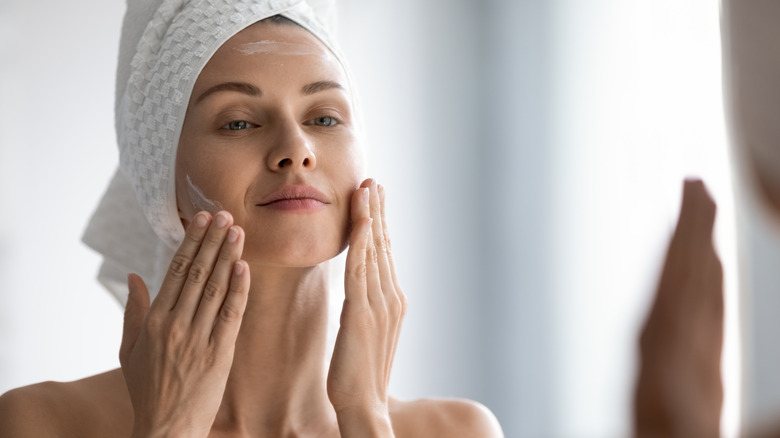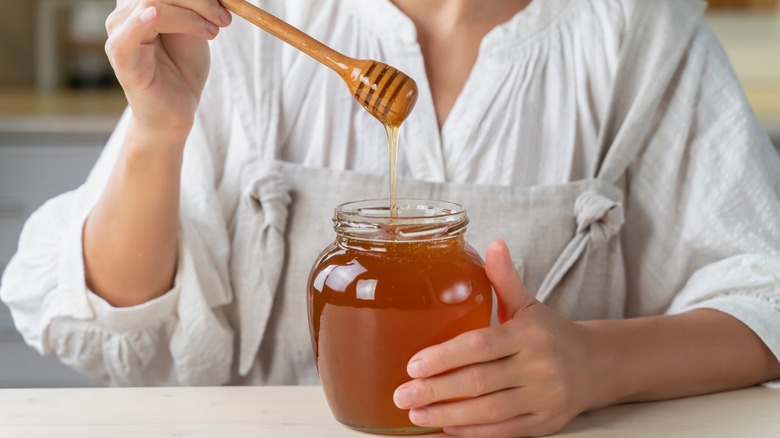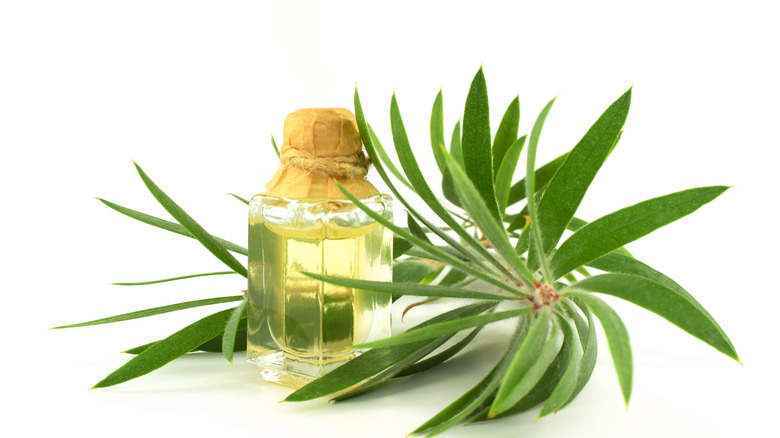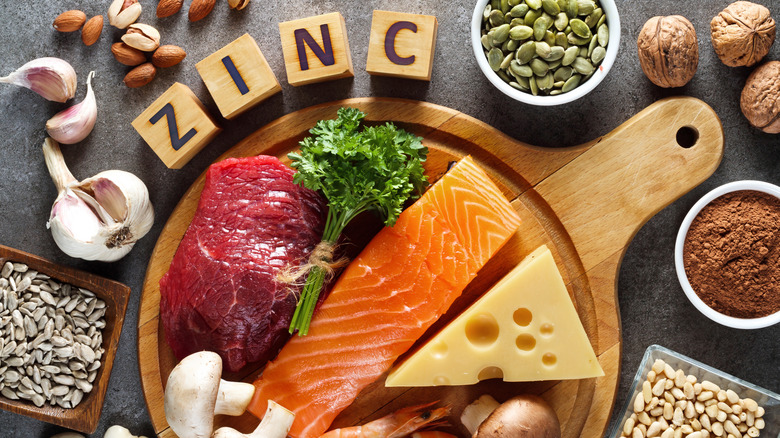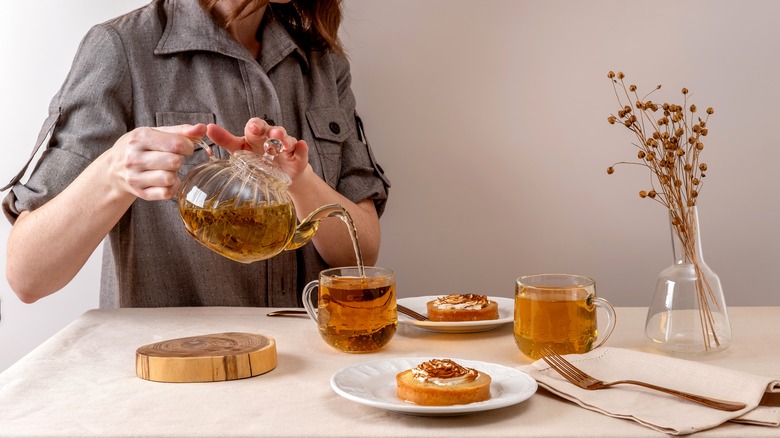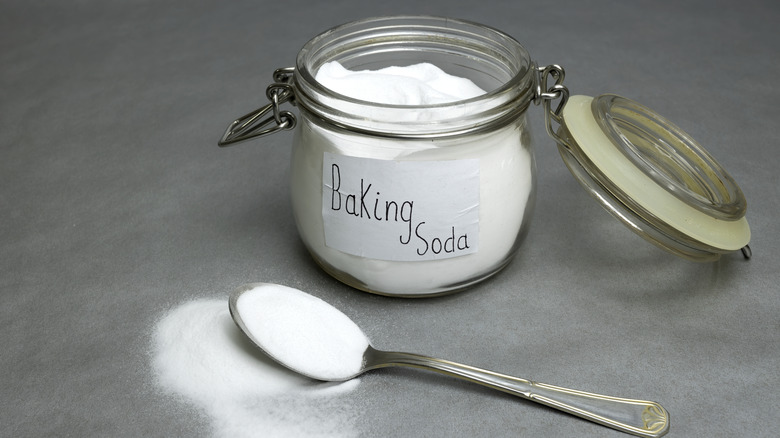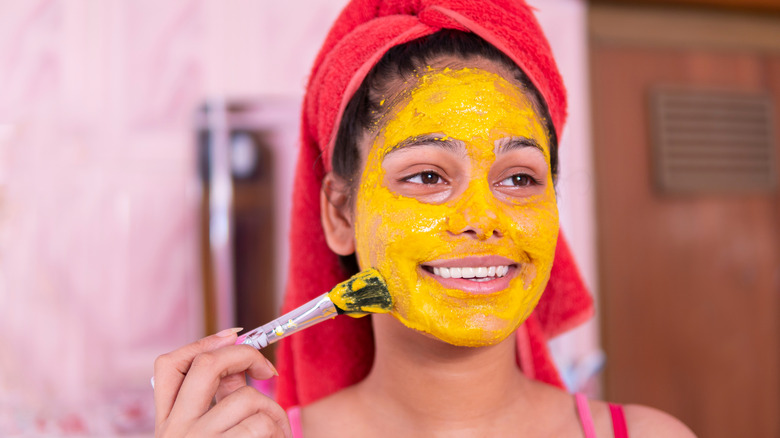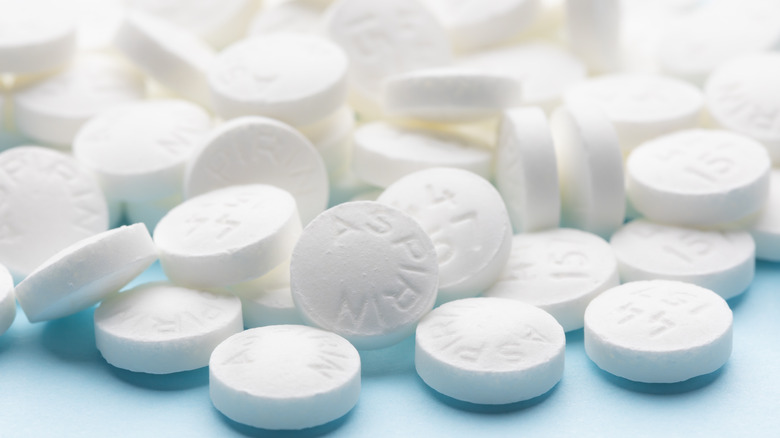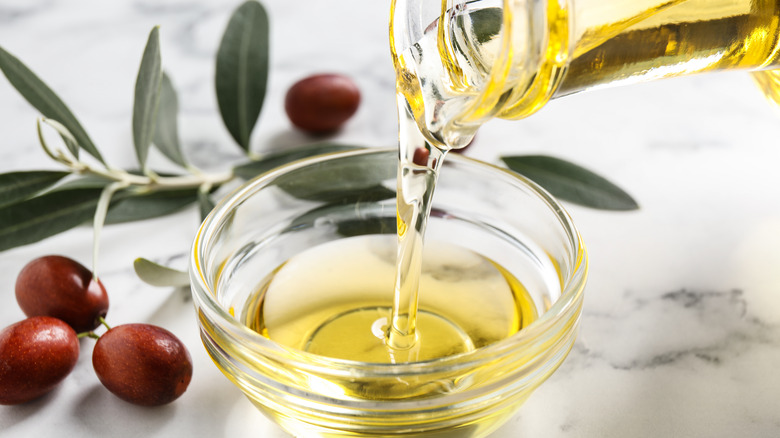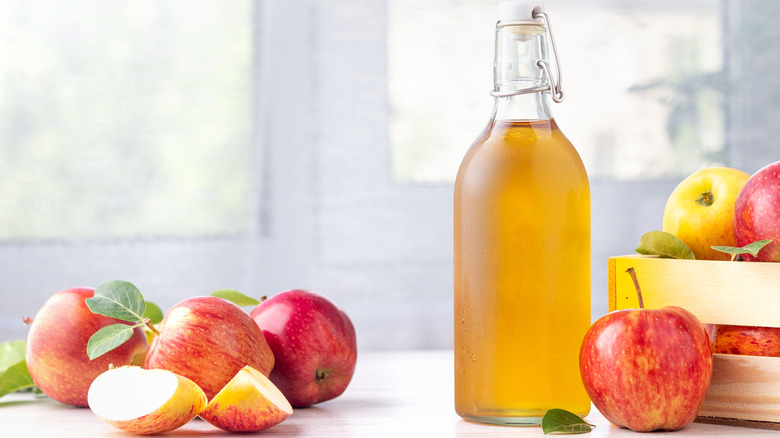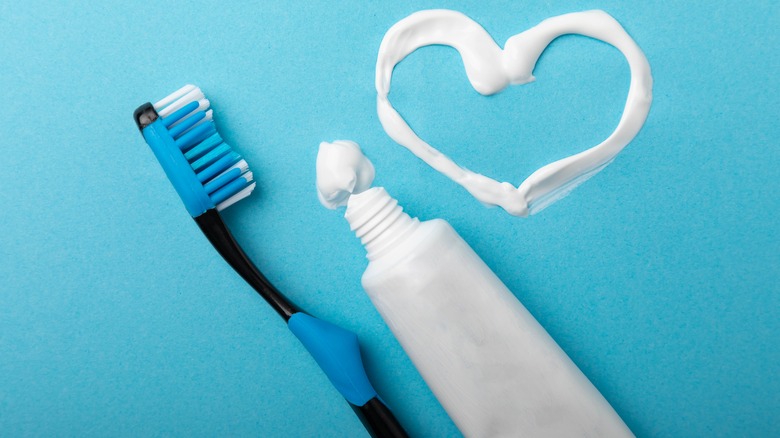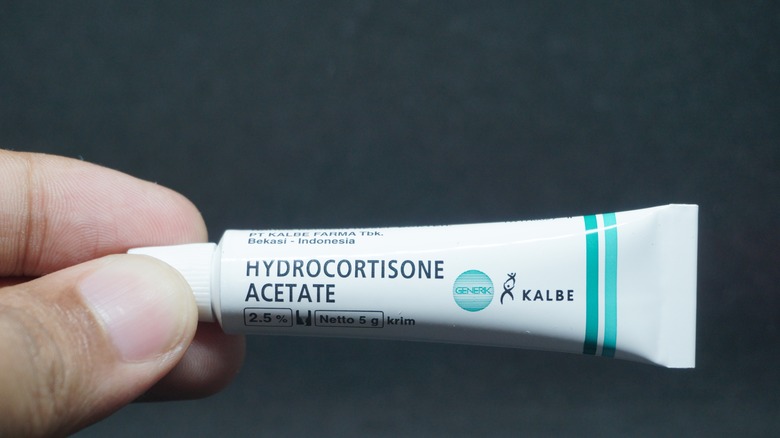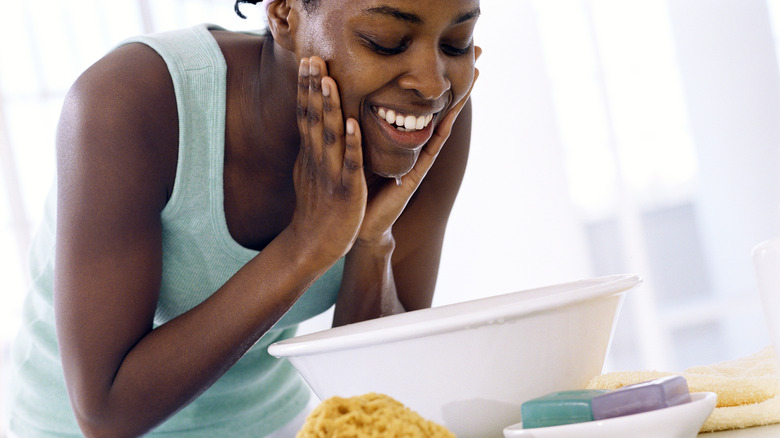The Best Acne Treatments You've Never Heard Of
We've all heard the nasty names referring to various types of acne: blackheads, whiteheads, zits, bumps, and cysts. Acne seems to have a mind of its own at times — zits tend to pop up right before a dream date, wedding, or exciting job interview. And while we try to combat its problematic appearance with topical treatments and even prescribed medicine, our skin doesn't always respond as we'd like. These formulations often leave us self-conscious with peeling and severe dryness — the fight is real, folks. According to American Family Physician, there are around 50 million people in America who battle acne, so we're not alone. It most commonly flares up on the face, back, neck, shoulders, chest, and upper arms, but it can show up anywhere on the body.
Acne is actually the most common skin condition that normally occurs after puberty. In fact, Medical News Today shares that some potential risks for developing this skin disease include the menstrual cycle, puberty, humid and warm climates, genetics, popping pimples, and wearing oil-based makeup.
Despite our best efforts, it's not always possible to combat the acne enemy. But there's a whole bevy of home remedy treatments for acne you've never heard of that come from nature's own medicine cabinet. Here we review the best DIY acne treatments that don't require a visit to the dermatologist or a frantic trip to your best friend's house to shop her zit-zapping creams.
Manuka honey
Centuries ago, the ancient Egyptians and Greeks used manuka honey to heal various skin irritations. It contains a high level of methylglyoxal (MGO), which shows up in the honey naturally. According to an overview in AIMS Microbiology, the MGO is one of the main components that gives honey its antibacterial and antimicrobial qualities. This, in turn, means putting it on acne may very well reduce the redness and inflammation.
In fact, manuka honey is hiding a world of benefits within its deep yellow glow. Not only does it help diminish inflammation, but it also provides intense moisture while getting rid of the bacteria inside your pores.
The benefits of honey are incredible both when we consume it and use it on our skin. You can simply put a dot of honey on your acne and cover it with a bandage or try to clear it up with this sweet DIY honey mask. First, you'll clean your face with a cleanser. Second, you'll put honey on your entire face for between 20 to 30 minutes. To cleanse, simply use warm water. Finally, dab your skin dry with a soft towel. To complete the treatment, use a moisturizer sans oil.
Tea tree oil
Tea tree oil has also been used topically for centuries. It's used for skin conditions including insect bites, athlete's foot, and acne. But where does tea tree oil come from exactly? It is actually an oil that is derived from steaming the leaves of the Australian tea tree.
Tea tree oil is an anti-inflammatory oil, so it will help reduce the puffiness of a breakout. But be careful how you incorporate tea tree oil into your beauty routine. Dr. Erum Ilyas, a board-certified dermatologist at Schweiger Dermatology, tells Insider, "If using pure tea tree oil, make sure the product purchased is 100% tea tree oil to avoid irritation from other ingredients."
Once you've figured out which pure tea tree oil to use, expect some favorable results on your face. New York-based dermatologist, Marisa Garshick, M.D., tells Women's Health, "It helps with acne because the oil has been found to have antimicrobial effects against Cutibacterium acnes, a type of bacteria that is found in healthy normal skin, but one that's also known to be involved in the formation of acne."
Zinc
Zinc has anti-inflammatory abilities that assist with acne by decreasing redness and swelling. One study shows that people who took zinc healed from acne faster than those who didn't. A dermatologist may suggest taking supplements of zinc if they think you might have a deficiency.
Zinc also helps with wound scarring — including acne scars, according to the National Institutes of Health (NIH). The recommended daily intake of zinc isn't to exceed 40mg for adults (via NIH). However, the recommended dosage depends on your age.
Of course, the best way to get zinc is from your food intake. Foods rich in zinc include shellfish, meat, legumes, squash, and sesame. Nuts are also a great source of zinc. Think cashews, almonds, walnuts, pine nuts, and peanuts. There's also beloved dark chocolate! How's that for a reason to indulge in some delicious dark chocolate with peanuts? But one of our favorite zinc-loaded spreads is hummus. Indeed, garbanzo beans, also known as chickpeas (which is what makes hummus) are full of zinc. So get out the veggies and pita bread, and spread on the hummus!
Green tea
Green tea for acne? Yes, one of the most consumed beverages in the world can help keep acne blemishes from getting out of control. And it turns out that you can either drink or use green tea topically on your face to help combat the beast.
Antioxidant molecules called polyphenols are present in tons of food including yummy chocolate, fruits, nuts, vegetables, wine, and tea. And these polyphenols contain anti-inflammatory, antibiotic, and antioxidant properties. A study found that the polyphenols present in tea may be effective in keeping the production of sebum in the skin at bay. And the best news? The study also indicated that this could be a treatment and preventative measure for acne. All the more reason to skip that latte and focus on consuming more green tea!
One way to use green tea topically is to spray it on as a facial mist. This simple DIY green tea spritz will soothe irritated skin with acne. First, you'll brew some green tea and allow it to cool. Secondly, you'll pour 2-3 tablespoons of cold tea into a spritzer bottle. Next, you'll wash your face with your preferred cleanser and pat dry with a towel. Then, you'll mist the green tea on your face and allow it to dry. Follow up by rinsing your face with cool water and patting it dry with a towel. And finally, finish by adding moisturizer.
Baking soda
Baking soda has quite the reputation for busting acne, even those pesky whiteheads and blackheads. Celebrity facialist Joanna Vargas of Joanna Vargas Salon tells Byrdie, "When mixed with water, baking soda is awesome for getting rid of blackheads. You can put the mixture on the nose after the shower, and all the blackheads come right out." This is some seriously good news! But keep in mind that baking soda should only be used on skin that struggles with acne.
Making this mask is a cinch. Simply combine 1 tablespoon of warm water with 2 teaspoons of baking soda, adjusting the amounts so a nice mask consistency is realized. Now you'll apply it to your face and leave it on for 10 minutes. Next, you'll wash it off and pat it dry. Finally, you'll use some moisturizer on your face. This pore-clearing baking soda mask should reveal subtler skin that feels smooth and looks dazzling.
Turmeric
Turmeric has a long-standing reputation for being a wonder spice. It has anti-inflammatory effects, the ability to speed up the healing of wounds, and even helps the immune system. So it's no surprise that it is also beneficial when fighting pimples. That being said, when you include amazing honey and turmeric together, you'll really have a stellar concoction to war against acne.
There are a couple of different remedies for acne using turmeric that should speed up the healing of an ugly zit. First off, we turn to honey and turmeric. Mix ½ teaspoon of honey with 1 teaspoon of turmeric until it forms a paste. Then, put the paste on the acne and leave it for around 10 minutes. Rinse with water and — voila. Try this mix a few times a week to achieve clear skin.
Another option is the turmeric and milk mixture. Mix 2 tablespoons of milk with ½ teaspoon of turmeric. Put the mixture on acne using a cotton ball. Allow it to sit for 10 minutes, then rinse. Try this mixture every other day for the best results.
Aspirin
The "aspirin cure" for acne has been discussed among well-meaning friends as long as using toothpaste as a reliever for acne has been. But does it really work? It makes sense to believe it could be a remedy since aspirin is an anti-inflammatory. But be careful! Too much aspirin may dry your skin out, plus you're never to use it on the skin while pregnant. As always, it's best to try a small test patch before ever putting any new product on your skin.
"Because aspirin is an anti-inflammatory, it may help with some of the skin inflammation in acne. However, we have much better options to decrease swelling and get at the clogging and hormonal triggers in acne," reveals dermatologist Jennifer Herrmann, M.D., to Ipsy.
If you're going to try out the DIY aspirin mask, be sure to use uncoated aspirin tablets. First, you'll crush 2-3 aspirin tablets into a powder consistency and mix it with several drops of water to make a paste-like substance. The paste can then be used over the entire face for 10-15 minutes. Rinse with warm water after. To use as "medicine" for individual pimples, the paste can be left on overnight.
Jojoba oil
Jojoba oil is certainly a surprising acne solution. But it's important to note that it's not even an oil. "Jojoba oil is actually a liquid wax, which is why it feels less greasy on skin compared to oils," cosmetic chemist Ron Robinson of BeautyStat reveals to Allure.
Turns out jojoba oil is an anti-inflammatory, which we know is great for pimples. However, keep in mind that it's best for sensitive or dry skin. Jojoba is a shrub from the southwestern United States and northern Mexico. The wax comes from the shrub's seeds and is also used to treat chapped skin, psoriasis, and sunburn.
"Jojoba helps with moisture on the skin's surface in the same way natural sebum would — without clogging the pores," reveals dermatologist Marisa Garshick, M.D., to Allure. "Additionally, its formulation is lightweight, so it won't leave the skin feeling greasy; it's noncomedogenic and won't clog the pores."
One study reveals a way to use jojoba on your face is to create a clay mask. Mix together a clay mask and jojoba oil until a smooth concoction is achieved. Then, apply it to your neck and face 2-3 times a week. Allow it to sit for 10 to 15 minutes. Rinse off and admire the glow. But keep in mind this may create a red appearance on your skin.
Apple cider vinegar
Apple cider vinegar seems to be the "it" tonic for just about everything! From a weight loss aid to a healthy complexion, what doesn't this juice from Mother Nature do? Ellen Marmur, a dermatologist in New York City and founder of MMSkincare, tells Women's Health that apple cider vinegar helps with certain kinds of acne. "While I don't think that apple cider vinegar can actually cure acne, I do believe that the ingredient can help dry out whiteheads." Well, we'll take it!
Here's one way to use apple cider vinegar on acne-prone skin. First off, test it to make sure your skin doesn't have a bad reaction. If all is okay, then proceed with this mixture of toner. Mix four parts water with one part vinegar (for sensitive skin you may want to use more water to dilute the mix). Then, use a cotton ball to put the toner on your skin. Let it sit for 5 to 15 minutes. When done, rinse it off. Finally, put on moisturizer. Try this toner one to three times a week.
Toothpaste
Using toothpaste as a spot treatment for a pimple has been tossed around for decades, but not everyone's heard of this inexpensive remedy. Does it actually work? Interestingly, the answer is: not anymore. Turns out the ingredients in toothpaste have changed over the years due to U.S. Food and Drug Administration restrictions, and the former active ingredient in toothpaste that could have been used for acne treatment is no longer used.
"Toothpaste used to contain an ingredient called triclosan, which had anti-microbial properties," reveals dermatologist Joshua Zeichner, M.D., to Men's Health. "This ingredient, however, has been removed from most toothpaste because it is a relatively common cause of irritation." It was also a common ingredient in antibacterial soaps! Other modern toothpaste ingredients, like those meant to help whiten teeth, could also be skin irritants.
So, if you were able to find a toothpaste that still contains triclosan, you could try it out as an acne spot treatment, just be aware that your skin might not like it.
Hydrocortisone
We normally associate using hydrocortisone with psoriasis or eczema. But it's also useful for skin that itches and is flaking from a bug bite, allergy, or poison ivy. The benefits of this useful cream may actually do the trick for an acne flair-up, as well. Why? Because it helps soothe the dryness, diminish the redness, and ease the inflammation. Sounds perfect for an uninvited guest that debuted on the face.
Keep in mind that hydrocortisone is best geared toward cystic acne and not a whitehead or blackhead. That being said, it is even more potent when combined with a topical such as benzoyl peroxide, retinoids, sulfur, or salicylic acid. "These ingredients work together to reduce the causes of an inflamed pimple — the oil at the skin surface, the clogging of the pore, and the acne-causing bacteria P. acnes," dermatologist Jordan Carqueville, M.D., tells Byrdie. This should only be used as a treatment option twice a day for several days. If you have persistent acne that doesn't respond to any of these suggestions, consult with a board-certified dermatologist. There are many other options for resolving acne.
DIY practices for acne-free skin
One DIY cleanser for both oily and acne-prone skin that combines several of our listed treatments is from Dr. Josh Axe. This honey face wash combines a mix of natural ingredients that should leave your skin feeling sweet. Mix together 1 tablespoon of liquidized organic coconut oil, 1 tablespoon of apple cider vinegar, 3 tablespoons of manuka honey, and 20 drops of tea tree essential oil. Store the mixture in a cool place in a glass container. Wash your face twice daily with this mixture for 20 to 30 seconds and dry with a towel. This should result in a complexion that can't resist a selfie.
Sadly, there are many things that can prompt an acne attack. Naturally, our hormones can be the responsible party, but so can our diet and stress levels. You can try to keep fried foods to a minimum to keep acne at bay, but equally important is minimizing stress levels. Yet another essential reason to practice self-love and be kind to yourself. Take the time to explore uncommon acne treatments to see if any are right for your skin type and needs. And, of course, keep using skin-loving cleansers, toners, and creams that help prevent and eliminate acne breakouts.
